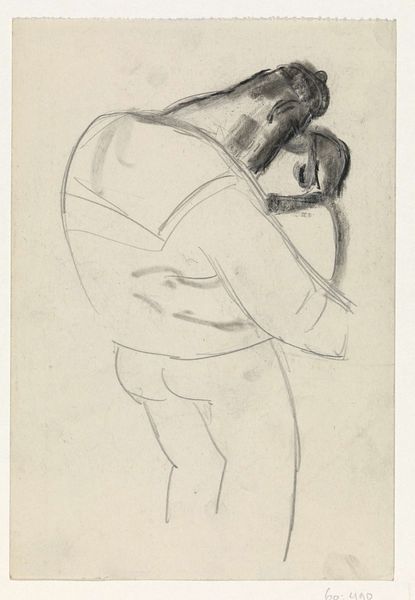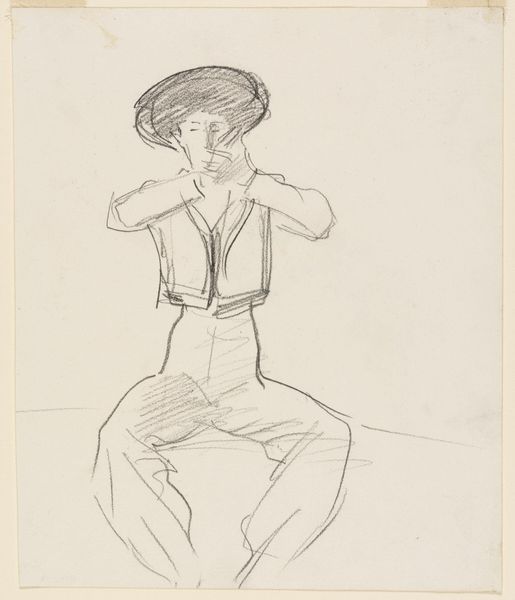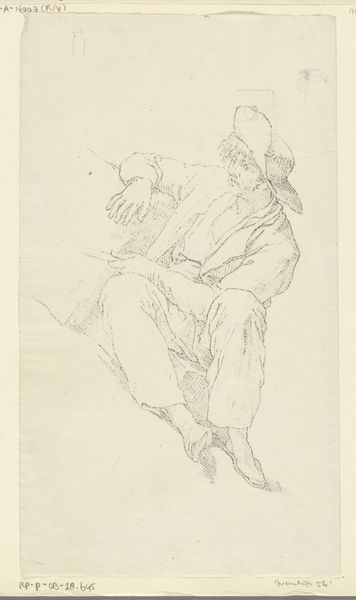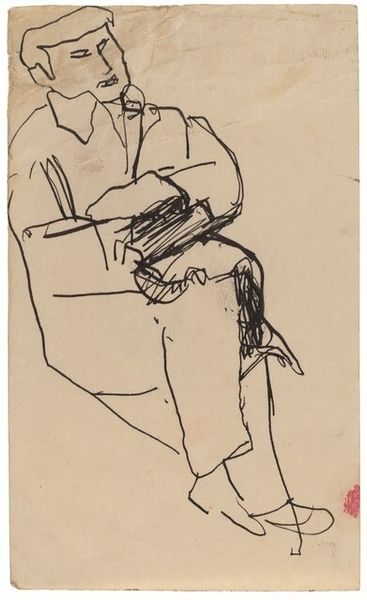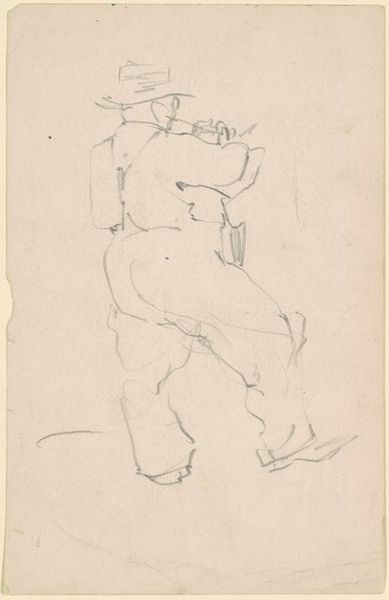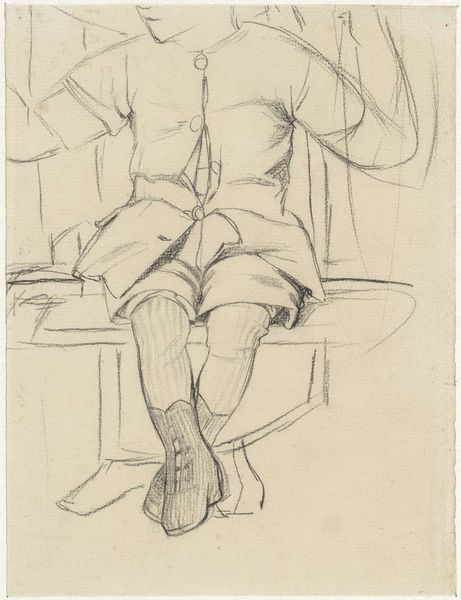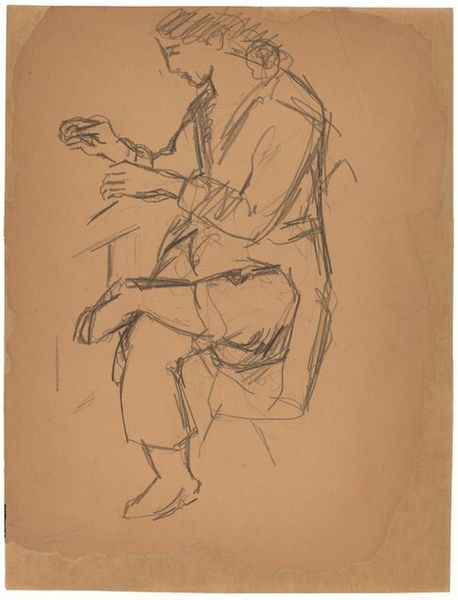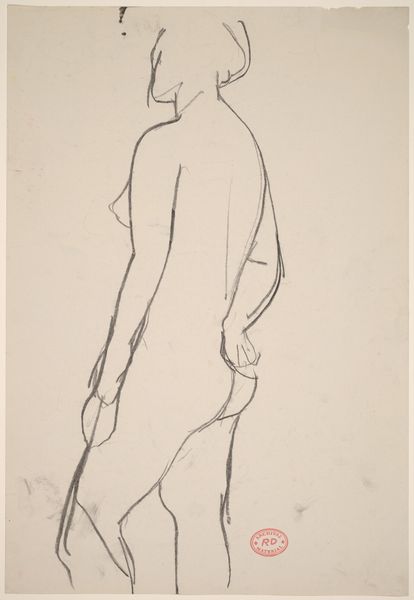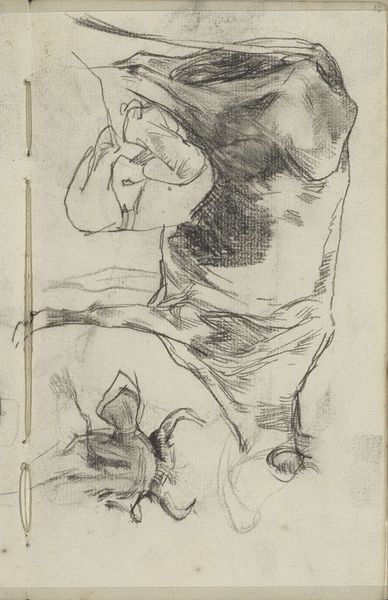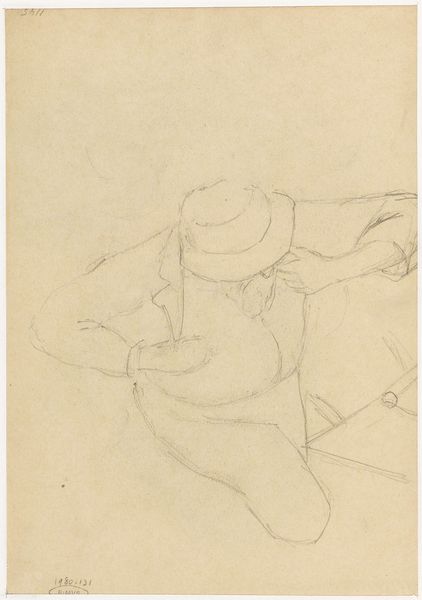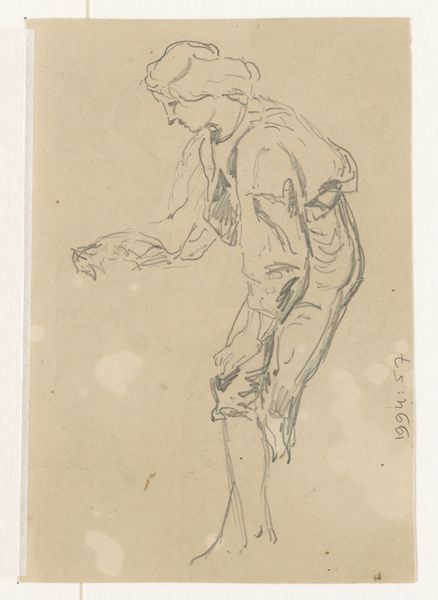
drawing, paper, pencil
#
drawing
#
pencil sketch
#
figuration
#
paper
#
pencil
#
realism
Dimensions: height 161 mm, width 130 mm
Copyright: Rijks Museum: Open Domain
Editor: This drawing, "Benen van een lopende jongen," or "Legs of a Running Boy," made with pencil on paper sometime between 1874 and 1945 by Carel Adolph Lion Cachet, is fascinating. It only depicts the lower half of a figure. What do you see in this piece? Curator: The fragment itself speaks volumes. Consider the historical context. Children's labor was prevalent during much of the period this was created. This snippet, then, presents a political question: Whose child is this? What is he running toward or away from? What is the nature of this race and what stakes are implicit? Editor: That's a heavy reading. I was just thinking about how dynamic it looks, like the artist captured a fleeting moment of movement. Curator: But is that dynamism disconnected from social realities? The casualness of the sketch belies a deeper question about childhood, class, and movement. Look at the boots, the clothes, simple but adequate. Is the artist consciously commenting on child labor, or merely depicting a scene? Does the intentional omission of the head de-personify this boy in any way? Editor: I never would have thought about it in terms of class and labor, especially from just the legs and feet! Curator: The beauty of art is that it holds multiple truths simultaneously. Even seemingly simple sketches can reveal complex narratives when viewed through different theoretical lenses. The unfinished nature encourages a deeper dialogue between viewer and artwork. Editor: I think I have a lot to think about, in order to come back to see art. This approach will allow a much wider perspective than I'm used to. Thank you. Curator: Precisely! Let’s keep pushing boundaries.
Comments
No comments
Be the first to comment and join the conversation on the ultimate creative platform.
